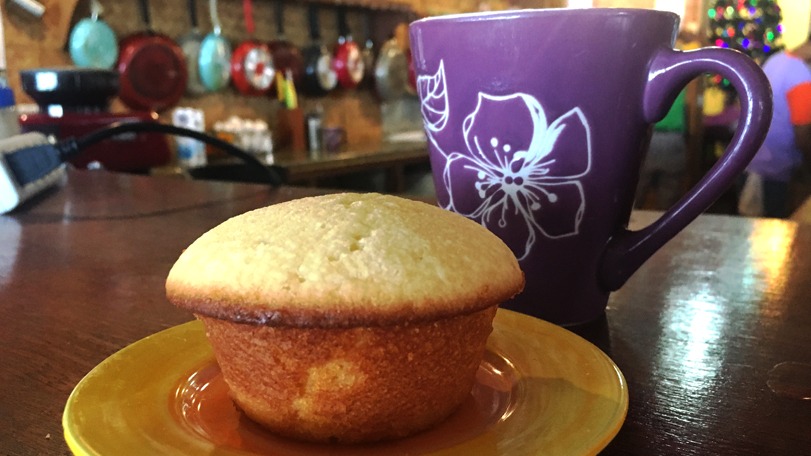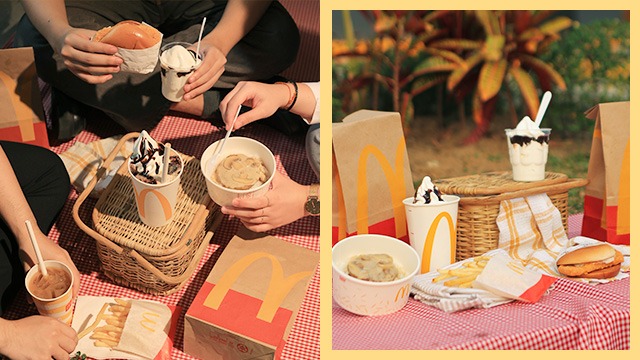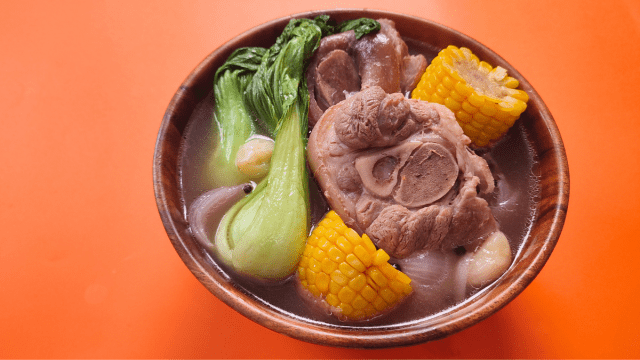Just two hours away from the Metro, is Rizal province, a province filled with unique restaurants and one-of-a-kind food finds.
Although only two hours away from the hustle and bustle of Metro Manila, you’ll see Rizal as a whole new world where the art, people, nature, and food are all enchanting. You’ll be drawn under the spell of their delicious dishes, all carefully, thoughtfully crafted with a discerning eye. Fair warning, once you experience the delights of Rizal, you might be left with the thought: why did it take you so long to explore this side of the country?
The under-appreciated province is filled with delicious food finds coupled with a rich, tapestry of art culture. San Miguel Pure Foods Culinary Services Manager Llena Tan-Arcegas hails it as, “the next Tagaytay” for good reason. Though worlds away in every aspect, Rizal is amazingly near Metro Manila. So, if you’re looking for a great province to explore with all your senses, (especially with your sense of taste!) then look no further.
In Rizal, food is art.
Before we dive into the delicious food, there’s something you need to know about Rizal; it’s the cradle of Filipino art. In 1965, national artist and Angono resident, Botong Francisco discovered petroglyphs etched on a rock shelter—art dating back to as early as 2000 BC. It was his discerning eye, so awake to his surroundings, that saw value in what everyone else at that time had just seen as mere scratchings. It’s that kind of discerning eye, that careful observance of nature, that made Botong into the artist that he is. It’s that same attitude that’s made the dishes we found in Rizal no simple fanfare—but works of art.
In Rizal, we found that food, just like good art, was a multisensory experience. When you’re eating something, with beautiful sights and sounds of nature and art as the background—everything just tastes better. Maybe that’s where the magic begins.

Balaw Balaw: Maybe the magic is in their culture?
If you’re heading to Antipolo for just one meal, let it be in Balaw Balaw. The moment you set sight on the imposing three-story aging structure, its juxtaposed roofs, it’s lively, almost unkempt greens, sculptures theatrically splayed about its curb—you know you’re getting an experience.
You’ve probably even heard of them before as they’ve long established themselves as the destination for adventurous foodies. Back in the day, before laws were put in place to protect the now-endangered animals, they used to serve bayawak (monitor lizard). They still serve “exotic” food though, such as crisply fried antik (giant red ants), uok (beetle larvae), frogs, soupy balut (stunted eggs), and juicy kuhol (snails). What you might see as exotic fare though is actually, for the locals of Angono, their traditional food. Going beyond the exotic game, there’s actually a lot more you can enjoy from Balaw Balaw.
Recommended Videos

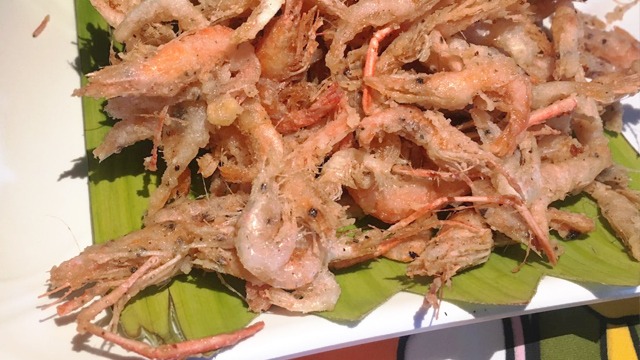
What if you don’t like adventurous food? There’s still something for you at Balaw Balaw.
We also recommend you get their Organic Fresh Oyster Mushrooms with Vegetables which tastes fresh, comforting, and buttery. You will no doubt love their Nilasing na Hipon—crunchy and bursting with delicious flavors of the sea. If you’re up for a drink, their Crispy Alamang, tossed with a little bit of sugar, is the perfect pulutan with a cold pint of San Miguel Beer or a gin cocktail.
Balaw Balaw sublimates their traditional cooking even more in their Minaluto menu item, that is served in a big wooden basin, a bilao, with a cornucopia from the land and sea, just like a family-sized boodle fight. The kamayan classics are all there: the squid, mussels, prawn, crab, kangkong, fried pork, chicken adobo, salted red egg, tomato, eggplant, and okra. We absolutely recommend you pair this with their of deeply flavored, satisfyingly sour Tanglad Iced Tea made of tamarind.
The heritage of Angono: What is balaw balaw?
More than the homey ulam though, core to the Minaluto spread is the delicious, indulgent, slightly tangy and creamy, pink and yellow rice right at the center that’s seasoned with the eponymous balaw balaw—what the natives call their local buro. It’s made using “angkak”, a specific red rice breed cooked to a gruel mixed with fresh shrimp paste, and then fermented. What you get is a tasty, tangy, sticky paste with a cheese-like funk and consistency. It’s a common delicacy in Angono and many other parts of the Philippines. Back in the day, before the buildings had sprung about Angono and it was mainly a mountainous range, peddlers would yell, “Balaw! Balaw!” to sell their homemade fermented rice.
The whole dish, a smorgasbord of delicious dishes laid out, taking up most of the table, is inspired by the childhood experiences of the man who began Balaw Balaw. Perdigon Vocalan the artist who began Balaw Balaw as both the resident artist and chef, was a prolific artist who spent his childhood near the Laguna Bay, where he also fished. In preparation for the fishing or hunting trips, they would wrap their food in banana leaves and place them in a big pot of water and rice. When it was time to eat, they’d cook it all together, giving them a delicious, hot meal to eat with their hands wherever they found themselves at.
The magic of food for Perdigon growing up, the joy he experienced, is faithfully recreated in the dishes of Balaw Balaw. The foraged, fished, and hunted wildlife right from Angono are the same dishes that make up his experiences in Angono. Even the surrealist, woodsy art that you’re surrounded with as you enjoy the food is inspired by his experience. Angono’s name, you see, is derived after the many “nuno” or fairies said to live in its forest. Perdigon himself, according to his son Andre Pedrigon Vocalan, had seen fairies himself. When Perdigon passed, his son Andre continued to cook and manage the restaurant gallery, so we can all have a taste of that magic.
When you go to Balaw Balaw, you get to borrow from their perspective. As you take in the full, multisensory experience of their food, the sight, the smell, the taste, the texture, and the ambiance around you, you get to live the Angono experience. The real gift is when their culture rubs off on you, and like them, you’re able to see the magic around you.
When and where? Balaw Balaw is located at Doña Justa Street, Angono, Rizal. Open from 8 a.m. – 12 m.n. and closed on Sundays.

Lutong Pugon: Art studio turned restaurant is a slice of pizza paradise with a slice of delicious, gourmet pizza.
You might wonder how Lutong Pugon gets all its customers. Tucked in the middle of nowhere, how do they ever find this place? The secret? Social media and well, nothing brings people together better than pizza.

Even with the rising heat from their ovens, smoke from burning Ipil firewood incessantly billowing out, the whole space remains airy and breezy thanks to the beautifully constructed bamboo structure. Around the place, you’ll find in hidden nooks, artworks from other artists, and in another sealed-off room, protected from the elements, are paintings by Artist Jun Tiongco, also the co-owner of Lutong Pugon.
At first, the area where Lutong Pugon sat was simply Jun’s art studio and home with his wife Aya. When Aya was pregnant with their twins years ago, Artist Jun had the idea of trying out pottery as another medium for his art. However, borrowing a kiln, a specialized oven that bakes pottery, seemed to him unsustainably expensive. So, he decided to make his own kiln from scratch, inventing his own recipe for the cement and laying it down brick by brick. His creation would later become the first pugon oven of their restaurant.

At first, Aya had been reluctant about the pugon, so Jun had to convince her how useful it was: “Puwede kang gumawa diyan ng pizza!” She agreed. Turns out, the pugon was the perfect pizza oven. Kilns, which are specially made to handle heat many times higher than a commercial oven, was perfect for making pizza. In order to achieve the crispy crust and tender inside, all the while without overcooking the toppings, the oven has to be at 500-1000 Fahrenheit. The kiln, with its blazing woodfire, is perfectly capable of these high temperatures. Thanks to their kiln-turned-pugon, they’re able to produce a perfectly cooked pizza that even has that slightly smoked Ipil, woody taste infused into the crust.

Jun, who’d spent some time in America, loved pizza but found he hadn’t found pizza as good locally. Aya, on the other hand, was always a striving home cook who grew herbs in their home. So, with whatever was available at the nearest grocery store, they made themselves their first pizza. Since then, it had become a staple dish for whenever they had guests—and they always had guests. Soon enough, with guests always arriving, they began to monetize.
Jun is the artist with canvas, but Aya is the artist with dough.
Jun, ever since, has abandoned using the pugon as a kiln for his own art. Instead, it had become Aya’s medium of art, as she now makes hand tossed, perfectly made, dizzyingly great gourmet pizza.
She uses her fingertips to stretch her dough, then expertly throws it in the air to further stretch it. She paints her white, fresh dough, her canvas, with house-made roasted tomato sauce, then her own garlicky pesto sauce. She scatters a generous amount of mozzarella and then follows all her fresh ingredients. She hovers her hand over the oven to know if the pugon is just the right heat—even thermometers bow to the heat of this kiln—and knows exactly when to put in her pizza. As the delicious mozzarella melts, and the flavors come together, she watches closely—rotating the pizza with her long handled-paddle to cook the pizza evenly. She has to move fast, a minute or two later, shimmying out her pizza, the ash on the oven floor and the crispy the pizza crust sliding against each other making a satisfying whisper that lunch is about to be served.
Her audience is always stunned into silence, completely enraptured by every delicious bite.
Flavors you must absolutely try? Their Gourmet Gambaretto Pizza! Topped with juicy prawns, fruity olives, garlicky pesto, fresh basil, and chicken chunks, it’s both an explosion of contrasting, complementing flavors, while also filling you up to delicious satisfaction.

For a meatier pizza option, go for their Gourmet Pepperoni Pizza which is simple, classic, but made even more special with pulled pork barbecue, which gives it a sweet richness.

Here’s insider news: they’re going to have a bed and breakfast by April or May 2019. You know what that means, right? Freshly made pizza for breakfast!
When and where? Lutong Pugon Tiongco’s Garden is located at Sitio Masanting, Sampaloc, Tanay, Rizal 1980. It’s open from 8 a.m. – 8 p.m.

Crescent Moon Café: Their homegrown herbs make every dish one-of-a-kind.
Crescent Moon Café, a little over two decades, has become an institution. The one who manages it today, Majalya Fernando, the daughter of ceramicist Lanelle Abueva-Fernando and Bey Fernando, knows it, too. There’s a certain experience, and certain dishes that one can really only consistently get at their restaurant that their city-dwelling visitors would travel for. How far has it come since Majalya, just a child playing pretend restaurant with his sister and parents named their imaginary restaurant after a crescent moon-designed quilt.
Majalya’s favorite from their restaurant is their Signature Suman Spread. The suman itself is incredibly tender and the sauces, chocolate, and mango, are both perfectly creamy and just the right amount of sweet. She describes suman as a very Antipolo dish, but theirs was nothing like the local suman. Instead, it was completely their own.
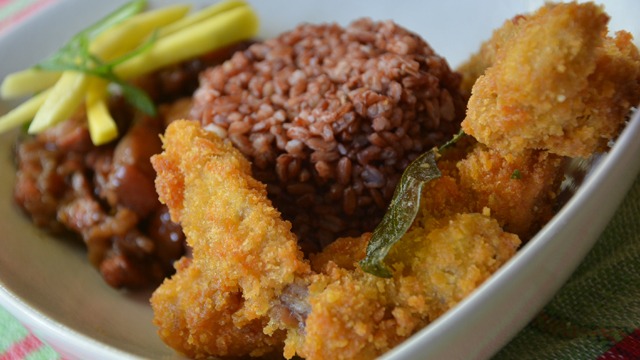
Everything you get from Crescent Moon Café can’t be replicated elsewhere. Their must-try Salted Egg Chicken Tenders, for example, uses fresh curry leaves to give it its distinct flavor. They get their curry leaves from an old tree in their garden. It’s not easily found elsewhere. They also grow their own galangal, a southeast herb uncommon in the Philippines. Galangal, or blue ginger, gives their Gado-Gado Salad’s peanut sauce dressing that distinct spice.

What they’re most known for though has to be their Alagaw Appetizers. Many have tried to recreate this dish but many have failed. First off, it has to be fresh alagaw, which, before it even hits your palate, wafts its delicious, minty fragrance into your nose. Then the flavors start to burst: kamias (or green mangoes if kamias is not in season), ginger, garlic, shrimp, basil, green chili, and what makes the dish impossible to recreate: their secret sauce.

Although Crescent Moon Café has kept its menu dynamic and ever-changing, their alagaw wraps have been there since the beginning. It was one of the first food items in their menu way back in 1992 when Bey began to cook for Crescent Moon Café.
Bey had entered the restaurant business as a prescribed second life by his doctor. Due to kidney disease, he had to leave being a lawyer behind for a less stressful lifestyle. Sadly, he died after serving Crescent Moon Café for two years. Still, as the restaurant and the pottery business of this family of women continue to grow, his legacy lives on.
When and where? Crescent Moon Cafe and Pottery Studio is located at Sapang Buho Road. Brgy. Dalig, Antipolo City. Open from 9 a.m-5 p.m.and closed on Mondays.
It’s the magic of a wonderful recipe: it can immerse you into the chef’s world again and again, whenever you have it. It’s the case with Crescent Moon Café, Lutong Pugon, and Balaw-Balaw.
In Rizal, food is not just for sustenance, nor is it even just an experience, but rather, like art, it’s transformative. You enter any of these three restaurants and thanks to the food, the history, and the art, you leave satisfied, filled, happy, tickled, filled with child-like wonder, revived—like a different person.
ALSO READ:



